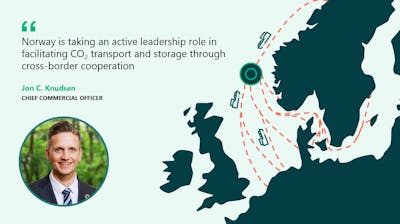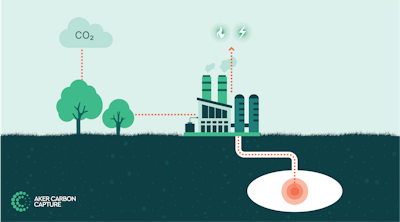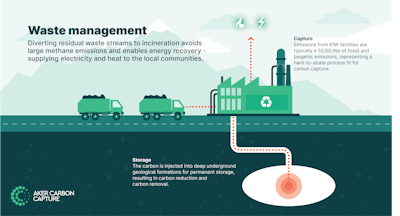Last week, July 12th marked a day of celebration for everyone working to accelerate decarbonization through deployment of Carbon Capture Utilization and Storage (CCUS). The EU Innovation Fund, the Union’s main instrument for funding large-scale low-carbon projects across Europe, released the results of the second call for large-scale projects. From the 139 applications received, the Commission selected 17 projects which will share the total grant budget of €1.8 bln. Out of these 17 projects, 7 include CCUS technologies.
Adding in the results from the first call in 2021, the total number of large-scale CCUS projects being funded by the Innovation Fund is now 11 out of 24 – almost 50%! This underlines the importance of CCUS in the EU’s vision for a climate neutral Europe by 2050, as well as the Commission’s determination to support the deployment of CCUS at scale. Equally important, it also highlights how quality CCUS projects are highly competitive in terms of cost/ton CO2 abated for large volumes, as these are evaluated against a range of other technologies in this highly competitive application process.
When diving into further detail of the results from the second call, the fine print contains some important highlights worth noting:
- A clear focus on cement and lime: 4 of the 7 new projects will apply CCUS to the cement and lime industry. CCUS is widely accepted as one of the main technologies to reduce process emissions from the cement industry; given that cement is responsible for approximately 8% of global annual CO2 emissions[1], the deployment of CCUS on European cement plants puts European cement producers at the forefront of innovation. With the CalCC project in France being awarded funding, this can potentially also mark the world’s first industrial scale CCUS project involving lime production. This supports the energy transition for crucial hard-to-abate industries, effectively future-proofing production and jobs to avoid carbon leakage, as well as giving the producers a competitive edge in the future low-carbon economy.
- CCUS expansion into Eastern Europe: Commercial scale CCUS projects are expanding geographically into Eastern Europe, with the ANRAV CCUS Cluster in Bulgaria and the GO4ECOPLANET project in in Poland. With reference to the ANRAV project, we at Aker Carbon Capture are delighted to see that HeidelbergCement is continuing to build on their experiences from the CCS project at Norcem’s Brevik cement factory, expanding CCUS into new regions. ANRAV has the potential to pave the way for CCUS in Eastern Europe, being a key anchor point to establish a CCUS cluster in Bulgaria, Romania and Greece.
- Development of cost-leading CO2 transport and storage infrastructure: Carbfix and Dan-Unity CO2 will build an onshore carbon mineral storage hub called the Coda Terminal, with an estimated total storage capacity of 880 million tonnes of CO2. This will help to fill Europe’s gap between carbon storage development and CO2 capture demand[2], which is one of the key bottlenecks for scale-up of CCUS across Europe in the years leading up to 2030. Furthermore, the combination of Carbfix’ innovative storage technology and the transport flexibility offered through Dan-Unity CO2’s maritime capacity, marks a breakthrough with respect to cost reduction in the CCUS value chain. In the project description, Carbfix reports an estimated storage cost of 13 €/tCO2, while Dan-Unity CO2 will manage transport at a cost range of 24-34 €/tCO2 (depending on the maritime distance). An additional premium of 6-9 €/tCO2 for green fuel for the ships is also given as an option, but the fact that the overall transport and storage value chain can be realized at cost levels south of 50 €/tCO2 is a great achievement! Aker Carbon Capture is proud to have to have partnerships with both Carbfix and Dan-Unity, as we jointly work to realize cost efficient CCUS for emitters across the European continent.
In addition to the projects mentioned above, Sweden’s two CCUS projects (HySkies and Project Air) supports the development of capturing biogenic CO2 to enable negative emissions and CO2-neutral fuels, and the acceptance of CCUS is also further strengthened by the deployment of a large-scale CCUS project in Germany; Carbon2Business.

(Source: EU Commission)
In addition to the CCUS projects funded, it is also worth noting the three hydrogen projects chosen in the Netherlands. This underlines the trend that green and blue hydrogen will be developed side-by-side to enable sufficient scale of the emerging hydrogen infrastructure. To view the full list of all the 17 pre-selected projects, please visit this link.
The impact of the EU Innovation Fund will also continue to grow going forward, as it is now gearing up to invest far more than originally planned. The fund was initially planned to invest €1 billion a year for 10 years, but the REPowerEU Plan has announced that the Innovation Fund will be strengthened to further support the EU’s independence from Russian fossil fuels. In effect, the Commission will double the funding available for the next (and third) large-scale call to around €3 bln. With €1.1 bln. invested in the first call, €1.8 bln. in the second, and potentially €3 bln. in the third, the total funding after three years could accumulate to almost €6 bln.
The next call is expected to be launched in autumn 2022, and Aker Carbon Capture is ready to support industrial partners committed to realize their CCUS through funding from the Innovation Fund! Please reach out to us at ccus@akercarboncapture.com if you would like more info on how we can support your application, as ACC has several offices across Europe to help support local applications to the EU Innovation Fund as well as other funding opportunities from the European Commission and Member States.
[2] Europe’s gap between carbon storage development and capture demand – Clean Air Task Force (catf.us)


